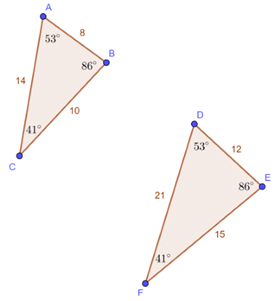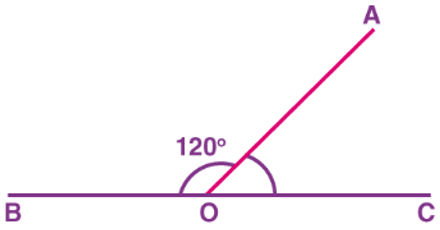HiSET Math Study Guide: Measurement & Geometry
Measurement and geometry questions will assess your ability to:
- Describe and perform transformations in the plane
- Determine triangle similarity and congruence to solve problems
- Use properties of two-dimensional figures and angle relationships
- Solve for the volume and surface area of 3D figures
- Apply the Pythagorean theorem in various contexts
Transformations in the Plane
A transformation moves or changes a shape while maintaining its size or proportions. There are four main types:
1. Translations (Slides)
- Moves a shape without rotating or flipping it.
- Every point shifts the same distance and direction.
- Example: Moving a triangle 4 units right and 2 units up.
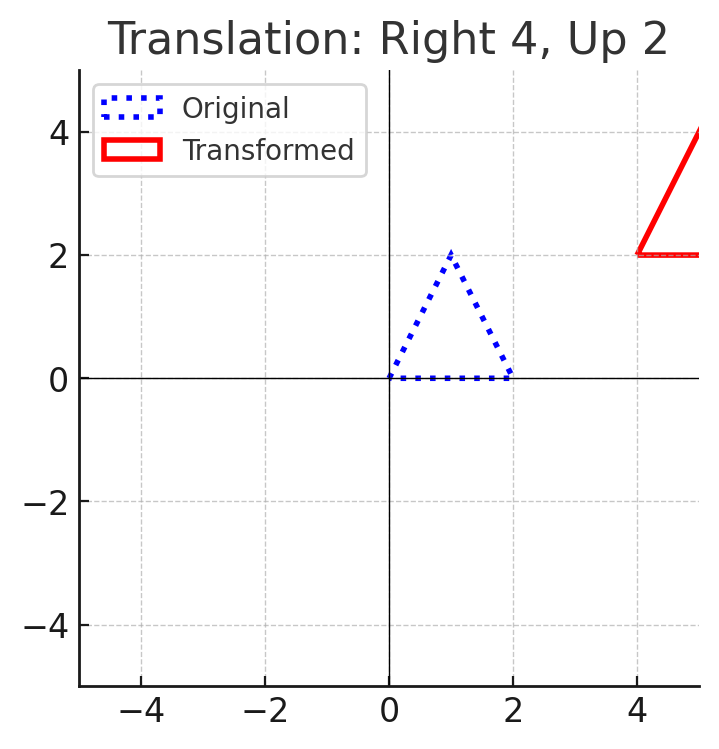
2. Reflections (Flips)
- Flips a shape over a line of reflection ($x$-axis, $y$-axis, or another line).
- The shape remains congruent but reversed.
- Example: Reflecting a triangle over the $y$-axis.
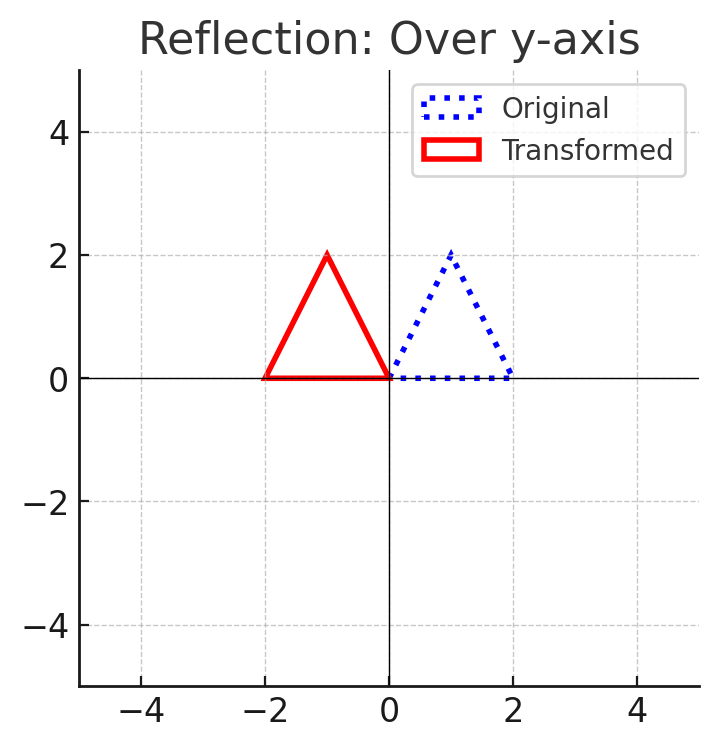
3. Rotations (Turns)
- Spins a shape around a fixed point, usually the origin $(0)$.
- Measured in degrees $(90°, 180°, 270°)$.
- Example: Rotating a triangle $90°$ counterclockwise around the origin.
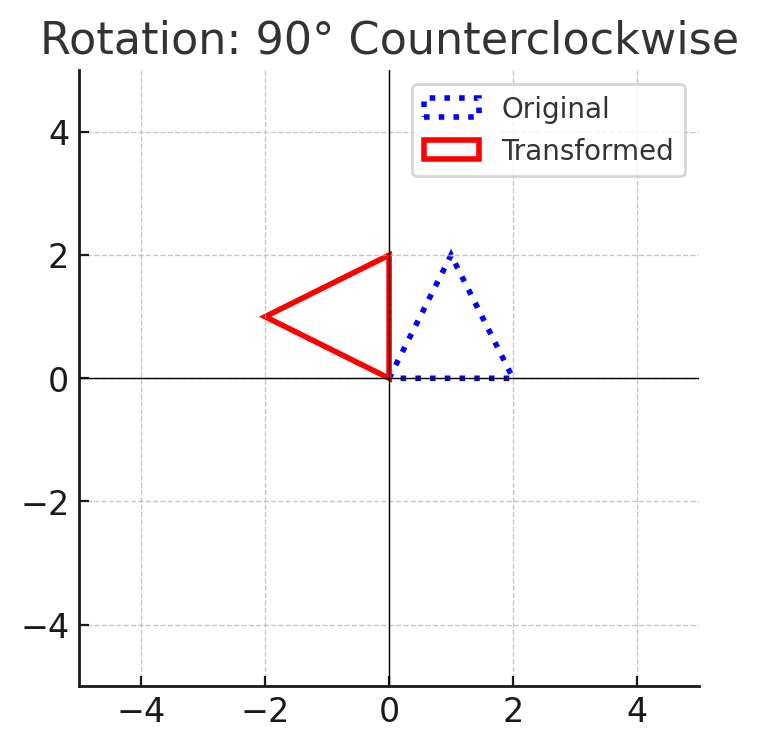
4. Dilations (Resizing)
- Enlarges or reduces a shape proportionally from a center point.
- The shape remains similar but not necessarily congruent.
- Example: Scaling a triangle by a factor of 2.
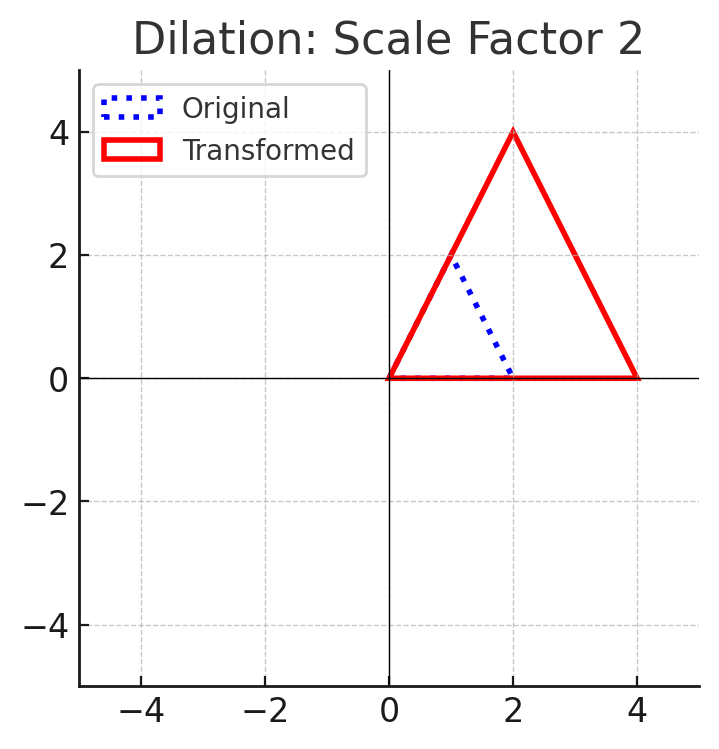
Congruence vs. Similarity
- Congruent figures: Same size and shape. Created by translations, reflections, or rotations.
- Similar figures: Same shape, but different size. Created by dilations (sometimes with other transformations).
The Pythagorean Theorem
The Pythagorean theorem states that, in a right triangle, the sum of the squares of the two shorter sides (legs) equals the square of the longest side (hypotenuse):
$a^2 + b^2 = c^2$
Where:
- $a$ and $b$ are the legs (shorter sides).
- $c$ is the hypotenuse (longest side, opposite the right angle).
Applying the Pythagorean Theorem
1. Finding the third side of a right triangle
If you know two sides of a right triangle, use the formula to find the missing side.
Example: Find the hypotenuse when $a = 6$ and $b = 8$.
$6^2 + 8^2 = c^2$
$36 + 64 = c^2$
$100 = c^2$
$\sqrt{c^2} = \sqrt{100} = 10$
2. Finding distance on a coordinate grid
The distance formula comes from the Pythagorean theorem:
$d = \sqrt{(x_2 − x_1)^2 + (y_2 − y_1)^2}$
Where:
- $(x_1, y_1)$ and $(x_2, y_2)$ are two points on the grid.
- The difference in $x$-values and $y$-values form a right triangle.
- The distance between points is the hypotenuse.
Example: Find the distance between $(1, 2)$ and $(5, 5)$.
$d = \sqrt{(5 − 1)^2 + (5 − 2)^2}$
$d = \sqrt{4^2 + 3^2}$
$d = \sqrt{16 + 9} = \sqrt{25} = 5$

